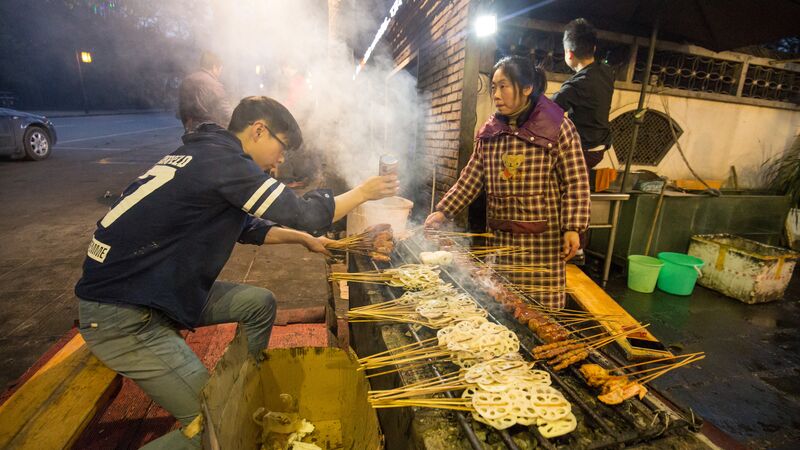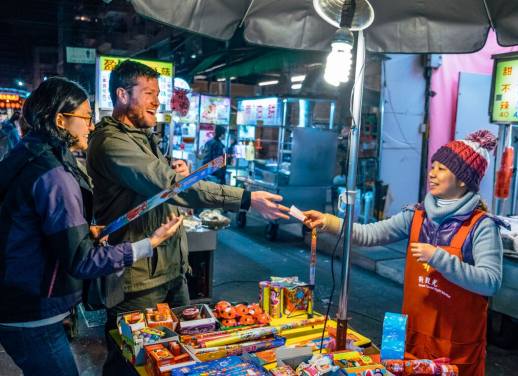First of all, a disclaimer: this list of snacks and street food is no way comprehensive. How can it be? This is China: current population 1.4 billion that includes at least 55 ethnic minorities in addition to the Han Chinese, and over 5,000 years of history.
The sheer size of the country means that each region incorporates distinct cultural, religious and geographic influences. All this, and more, has an impact on Chinese cuisine, making for an almost endless ingredient list.
The 7 Best Chinese Street Food Dishes
To keep things simple, let’s focus on a few of the most popular local snacks you’re most likely to find in the places you’re most likely to visit on an Intrepid China trip (with a few notable mentions, of course).
1. Baozi (steamed stuffed buns) – China-wide
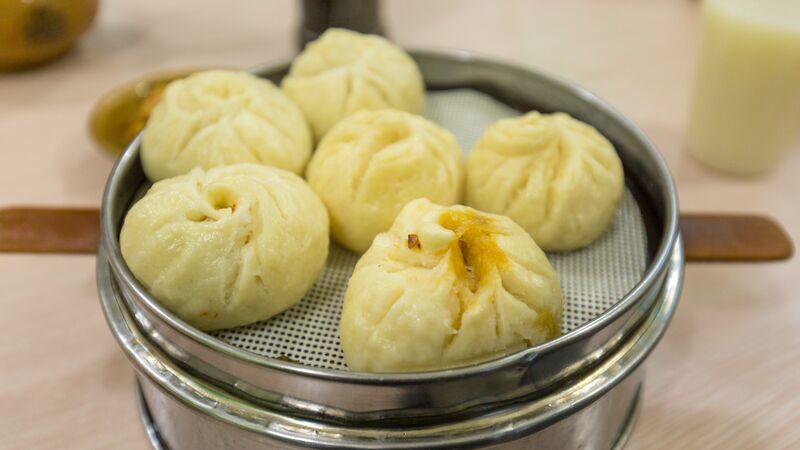
Photo by Damien Raggatt.
Now ubiquitous in inner-city suburbs around the world, baozi (or steamed stuffed buns) are a street vendor staple across China, particularly in the north. Light and fluffy, and most often eaten at breakfast, baozi are cheap, delicious and most importantly, easy to eat on the go. Fillings vary, and may be savoury or sweet, meat or vegetarian. Barbecue pork is a popular option, but depending on the region, you will also find buns filled with sweet red bean paste, green vegetables, or beef.
2. Jiaozi (dumplings) – China-wide
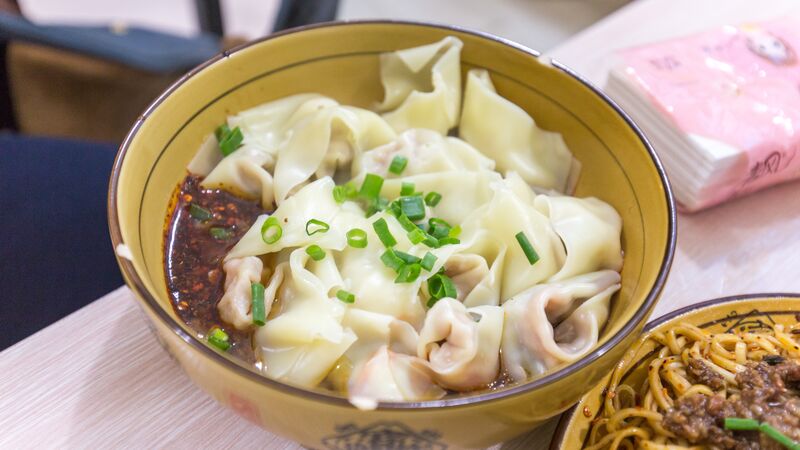
Photo by Damien Raggatt.
Typically smaller, with a thinner casing than baozi, crescent-moon-shaped jiaozi (or steamed dumplings) are also found throughout China. Served steamed, fried or in a soup, jiaozi are eaten at any time of the day, often with a dipping sauce of black rice vinegar and chilli oil. Fillings vary from region to region, and tend to be more extensive than with baozi; as well as pork, prawn, and chive, you’ll find dumplings filled with beef, mutton, scallops, mushrooms and cabbage – or a combination.
Also keep an eye out for the Tibetan equivalent, momo, and if you’re travelling the Silk Road to Xinxiang province, be sure to try the lamb-filled manti, with a side of chilli sauce.
3. Xiaolongbao (soup dumplings) – Shanghai
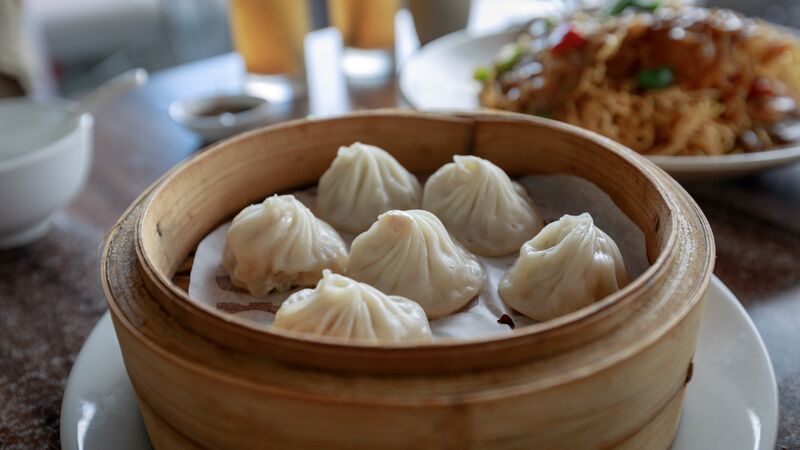
Photo by ARTYOORAN, Shutterstock.
Not to be confused with dumpling soup i.e. dumplings in a soup, xiaolongbao – a Shanghai specialty – are a delicious cross between a steamed bun and steamed dumpling that are filled with soup. As well as a delicately flavoured hot broth, fillings might include minced pork seasoned with ginger, crab and roe, prawn or vegetable. Take care when eating! A safer option, that is just as delicious is shengjian bao, a popular Shanghai variation on baozi, pan-fried steamed pork buns.
4. Jianbing (fried pancakes) – Beijing
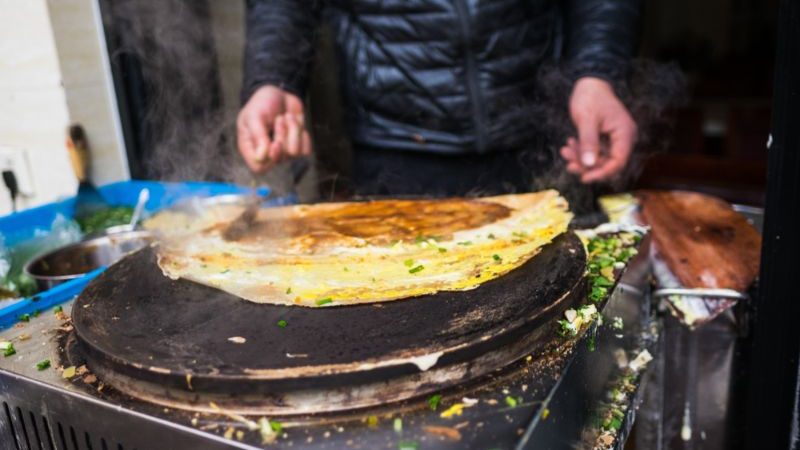
Photo by Larry Zhou, Shutterstock.
A familiar early morning sight on Beijing street corners, smoke from the open-air hot plate mingling with the mist, jianbing is one of the most popular breakfast snacks in China – and has been for thousands of years. Typically, a thin dough is spread across the grill and fried to a crisp, with an egg cracked on top, sprinkled with smatterings of coriander, spring onions and soybean paste. The crepe is then rolled around a crispy fried wonton – or in the case of jianbing guozi (originally from Tianjin province), around a youtiao (deep-fried dough stick). If you prefer a sugar fix in the morning, try tang youbing (sweet fried dough), fried in a wok and coated in brown sugar that caramelises as it cooks.
RELATED: “IS THERE MEAT IN THIS BEEF?”: A VEGETARIAN’S GUIDE TO BEIJING
5. Yang rou chuan (lamb kebabs) – Xi’an
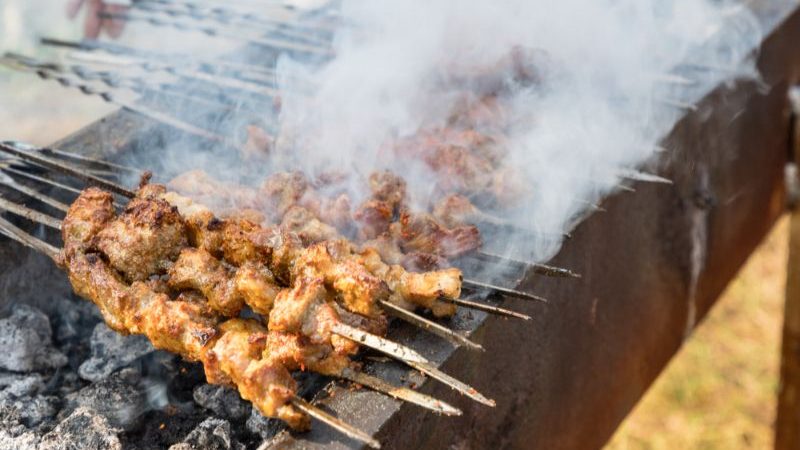
Photo by lightrain, Shutterstock.
You could spend a year in Xi’an and eat a different snack for every meal each day, and still never try everything. But a good place to start are the night markets, in the heart of the city’s Muslim Quarter. They are a sensory spectacle: listen to the constant chop chop as men slice rice bubble candy into tiny bricks, see carcasses hanging high near shish kebab stalls, feel the excitement of the crowds, the lights, the smells.
SUBSCRIBE TO INTREPID’S NEWSLETTER FOR MORE TRAVEL GUIDES, COMPETITIONS, GIVEAWAYS & MORE
You’ll also find some of the city’s – and China’s – most delicious snacks here. Follow your nose to stalls selling yang rou chuan, barbecued lamb kebabs, or join the queue for a roujiamo, the Chinese equivalent of a hamburger. In the Muslim Quarter, roujiamo are filled with cumin-infused fried beef; elsewhere these delicious flatbread sandwiches are usually stuffed with pork. In hotter months, liang pi (a cold noodle dish) makes for a refreshing light snack. After something sweet? Try the shizibing, a pan-fried persimmon pie, or hua sheng su, crunchy peanut brittle that is ideal to chew on during a train journey.
RELATED: HOW XI’AN BECAME AN UNEXPECTED HIGHLIGHT OF MY TRIP TO CHINA
6. Sichuan mala (spicy rabbit head) – Chengdu
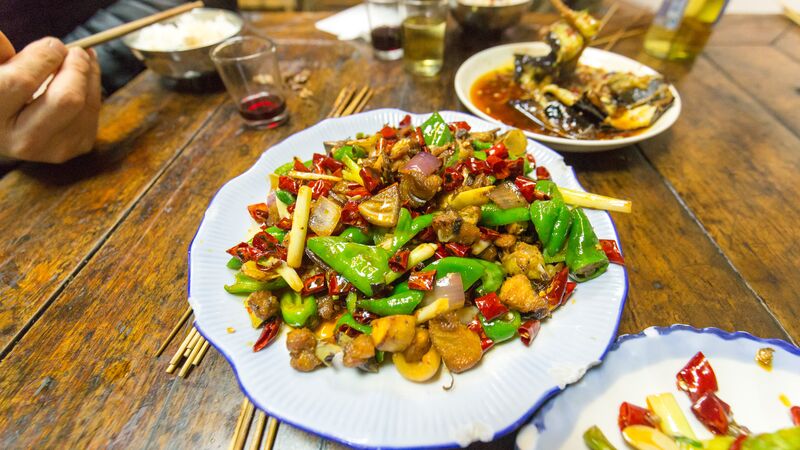
Photo by Damien Raggatt.
Sure, it doesn’t sound all that appetising, but rabbit head is a delicacy in Sichuan, and a popular snack in Chengdu. The heads are simmered for hours in a spicy sauce, and unsurprisingly, eating them is a messy business – fortunately specialist restaurants supply thin plastic gloves to wear as part of the experience.
Sichuan cuisine is known for being hot and spicy, and this is certainly evident in bang bang ji, a popular Chengdu snack. Chicken is pounded until it’s tender (hence ‘bang bang’), shredded and served in a sauce flavoured with chilli and Sichuan peppercorns. Another snack worth trying, especially during the hot Sichuan summer, is liang fen, a cold dish made from clear jelly noodles in a – you guessed it – spicy sauce.
Hungry? Join us on a small group adventure around China now – check out our full range of tours here.
Feature photo by Damien Raggatt.

